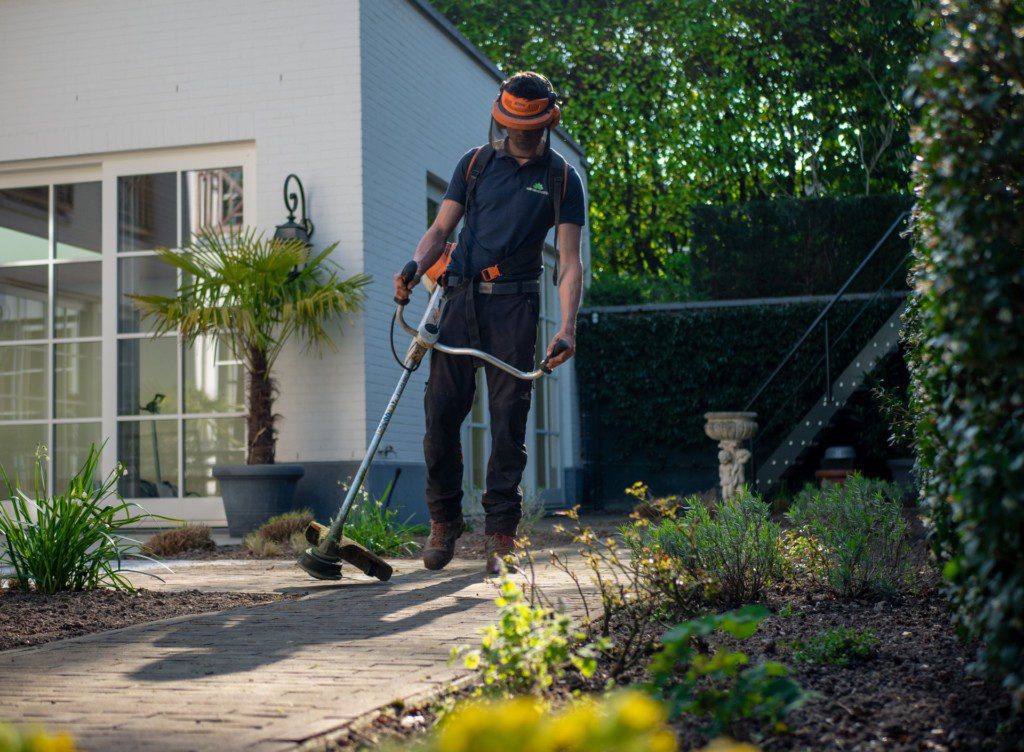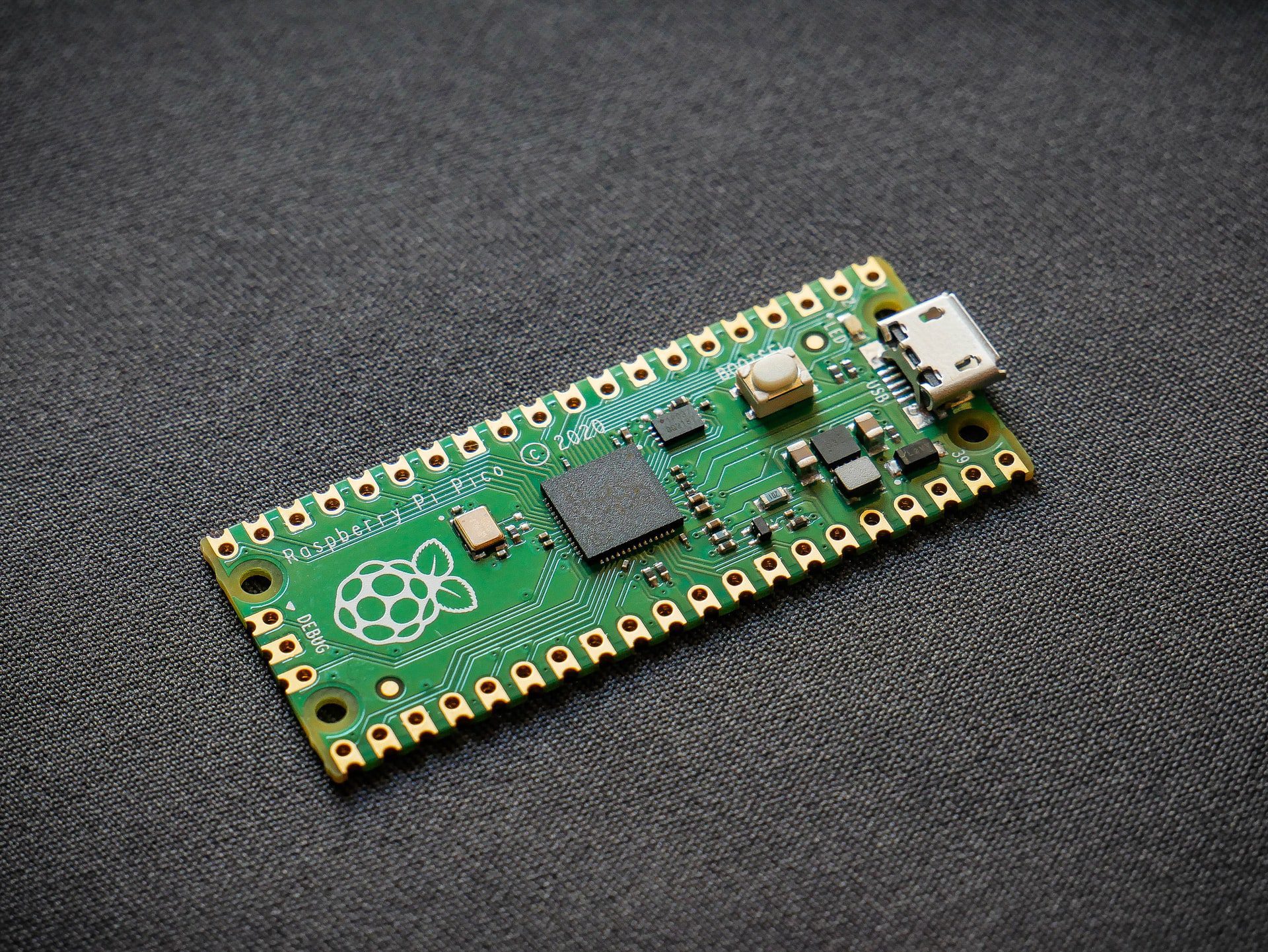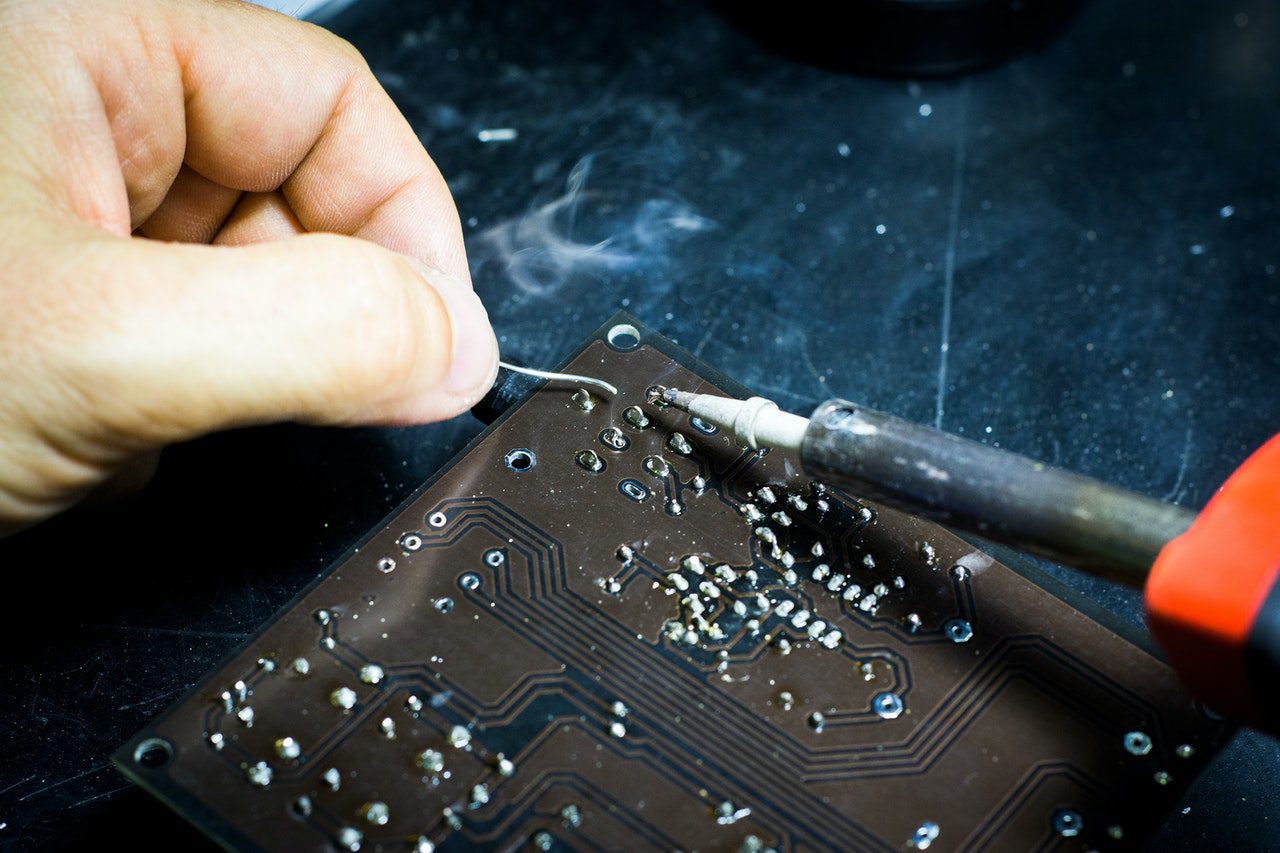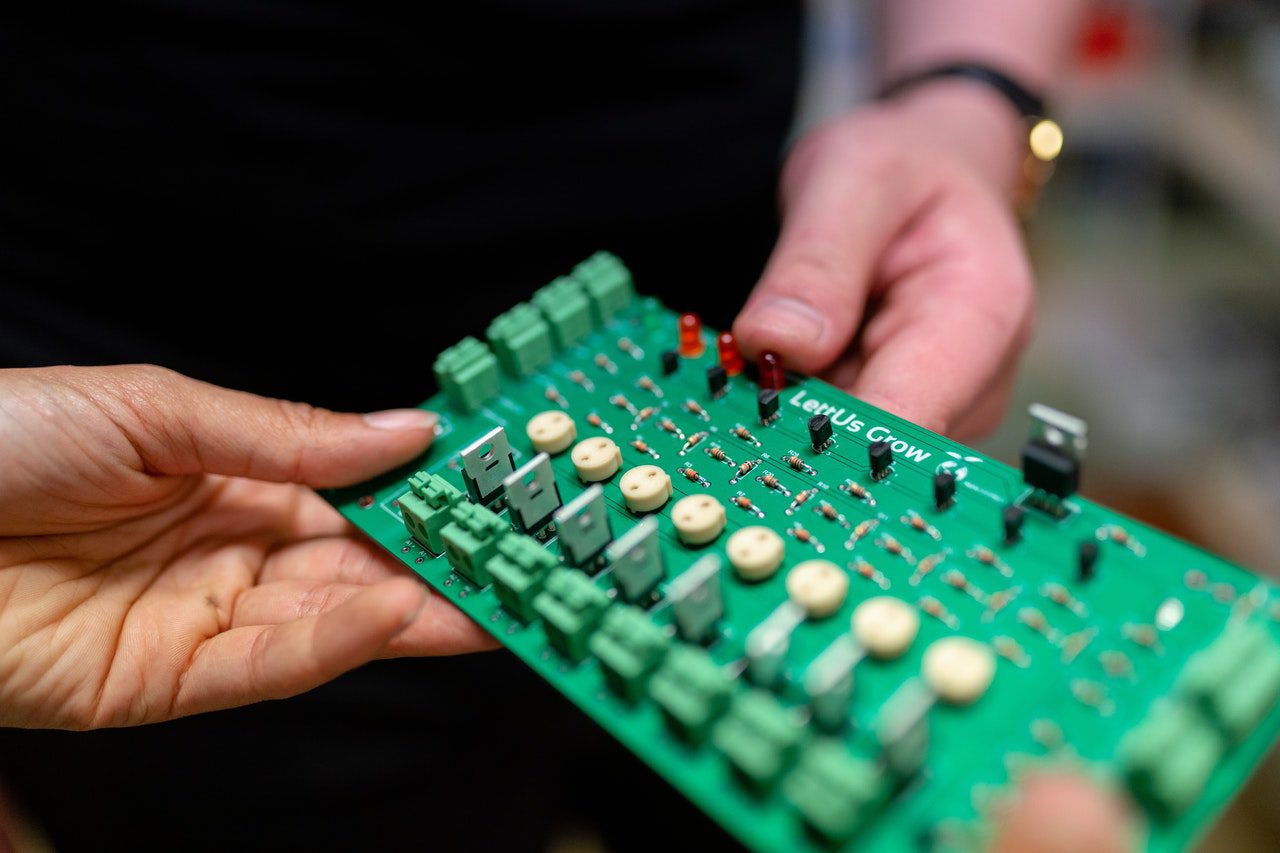01/03/2022 | Industrial Water Treatment | 8 MINUTE READ
Explaining the Process of Circuit Board Etching

Among the most important aspects of circuit board manufacturing is the etching process, which essentially involves controlled corrosion. When corrosion occurs in normal conditions, metals will become damaged. However, the machined process known as etching ensures that corrosion is controlled to effectively remove copper from the circuit board. Any non-circuit copper that remains on the circuit board will be wiped off of the board during the etching process, producing the final circuit pattern.
In many ways, etching a circuit board is the same as chiseling a rock. Before the etching process occurs, the circuit board is like a rock with a somewhat uniform design. When you chisel a rock, a highly specific design or pattern can appear. The same is true when the etching process takes place with a circuit board. Keep in mind that the only way for the etching process to be successful is to first prepare a layout or design that the circuit board will have once the base copper is removed. The image that the designer wants will be transferred to the circuit board via a process known as photolithography.
The process of circuit board etching can be as simple or complex as you need it to be. It’s possible to perform the etching process at home or in a lab as long as you’re only producing a small number of circuit boards. By performing this process in a smaller setting, you can substantially reduce the manufacturing costs. On the other hand, etching requires placing the circuit board into chemicals to get rid of the unwanted copper. These chemicals can be hazardous and are not easy to dispose of. It’s possible for water to be used during the etching process for rinsing off the chemical solution or as part of the solution. The following guide provides a detailed examination of circuit board etching and the importance of this process during the creation of printed circuit boards.
Types of Etching

There are two basic types of etching that can be used in industrial circuit board fabrication. The types of etching available to you include acidic etching and alkaline etching.
1. Acidic Etching
Acidic etching is a highly effective process that involves getting rid of copper from any internal layers in FR-4 circuit boards. Acidic etching is used with these types of boards because of how precise the etching can be. The acid within the solution doesn’t create a reaction with the photoresist, which means that the metal won’t have as much of an undercut. The only downside to this type of etching is that the acidic etching process takes longer to be completed than alkaline etching and other methods.
2. Alkaline Etching
Alkaline etching can be applied to the outermost layers of a circuit board. Since alkaline etching can be completed quicker than acidic etching, you won’t need to worry about the uniformity of any remaining copper being damaged. Because of the composition of an alkaline solution, it’s considered to be more active than an acidic solution, which means that careful monitoring is necessary to ensure the accuracy of the etching process.
Both types of etching processes have proven to be effective because a considerable amount of etching can be performed at a low operational cost. Acidic and alkaline etching can also be used with many different metals.
Parameters Affecting the Etching Process

The etching rate that you obtain depends on the composition of the etching solution as well as the etching time. Keep in mind that the etchant composition changes almost constantly, which can make it difficult to identify the etching rate. Quality assurance of the etching process can occur by controlling certain parameters, the primary of which include:
-Temperature
-Specific Gravity (Baume)
-pH
-Chemical additive concentration
-Oxidation-reduction potential
Temperature
When controlling the temperature of the solution, keep in mind that the majority of etching machines will be comprised of plastic parts since metallic parts are reactive with etchants. If your etching machine is outfitted with plastic parts, the temperature shouldn’t be too high. In this situation, the ideal temperature range is around 50-55° Celsius, which equates to 122-131° Fahrenheit.
Specific Gravity (Baume)
As for specific gravity (baume), this correlated to the concentration of the etchant. A higher baume value usually equates to a higher etch rate. When looking specifically at the pH of the solution, this parameter is particularly important for alkaline etching. Effective alkaline etching can be performed when the solution has a pH value that ranges from 7.9-8.1.
pH
If the solution’s pH is less than 8.0, the pH might have lessened because of too much ventilation or low ammonia. Keep in mind that the etch rate can also be low if the pH is higher than 8.8. This issue may occur if water has seeped into the etchant or there’s too much copper content. As for acidic etching, any increase in pH values could result in incorrect readings being gathered.
Monitoring pH in plating solutions can be difficult as the aggressive solutions can damage electrodes not designed for plating applications. The Sensorex differential pH Electrode is designed to withstand conditions in most plating applications.
Chemical Additive Concentration
Chemical additives can be used to effectively improve the etch rate. The most commonly used additive is hydrochloric acid, which is able to bolster the etchant’s ability to grasp onto dissolved metals. When an industrial or manufacturing facility requires continuous etching, chemical additives are necessary. Even though additives make etchants more complex, the etch rate will invariably improve.
Oxidation-Reduction Potential
The fifth and final parameter involves the oxidation-reduction potential, which indicates how active the etchant is. ORP directly indicates how cupric ions relate to cuprous ions and how ferric ions relate to ferrous ions. While the copper is being etched, the etchant will change to a cuprous/ferrous state from the initial cupric/ferric state.
If you obtain a high ORP measurement, you can be confident that the etch rate is also high. Low ORP values point towards an inefficient etchant. The ORP value of a solution can be determined by the etchant temperature as well as the presence of free acid content. It’s possible to introduce oxidizer and free acid to the etchant, which will result in the cuprous ions being changed back to cupric form.
The PCB Etching Processes to Fabricate the Board

The etching process is used when fabricating a circuit board. First, the hardened photoresist that remains on the inner layers of the board will protect the vias, traces, and other portions of the circuitry. The rest of the photoresist will be cleaned off, which results in bare copper. These layers will then be fully etched to make sure that any bare copper is removed. As such, only the final circuitry will remain. The same step will occur with the inner layers of a circuit board until copper has been removed from every board layer.
The next step in this process involves laminating every inner layer with fiberglass sheets that have been outfitted with an epoxy resin. Once lamination has been completed, thru-holes will be drilled into the board. The bottom and top layers of the board will then be covered with a photoresist material, after which a laser or ultraviolet light can be used to expose the photoresist. When this occurs, every aspect of the photoresist will be effectively hardened aside from the circuitry patterns. Once the photoresist has been washed off from the circuitry, the copper foil will be exposed.
The copper foil on the surfaces of the board will be fully electroplated with a much thicker layer of copper. After the copper plating process has taken place, the circuitry will be plated once again with a thin layer of tin, which will act as a protective layer for the copper while the final stage of the etching process is ongoing.
At this point, the hardened photoresist will be washed away, while the copper foil will be etched away. As such, only the copper circuitry with the layer of protective tin will remain. When the tin is finally removed, the board can undergo the last stage of processing.
Final Thoughts on Circuit Board Etching
Etching is an intricate and highly important process that’s necessary for the fabrication of printed circuit boards. While etching can occur in practically any setting, the process itself can be somewhat complicated if you’ve never dealt with etching before now. Even though alkaline etching is the quickest type of etching that you can use, the acidic etching process shouldn’t take too long. When you place a circuit board into an acidic solution, the copper traces can be fully etched in as little as 20 minutes.
When it comes to circuit board fabrication, etching is integral in the creation of the raw circuit board. While several additional processes will need to be completed before the board can be fully fabricated and finalized, the etching process essentially prepares the circuit board for the final stages of fabrication. If you want to find out how to perform circuit board etching, you can learn all about etching and printed circuit boards at this link. A highly detailed guide to PCB etching can also be found here.
Posted by Sensorex on January 3, 2022
Sensorex is a global leader in the design and manufacture of quality sensors for water quality and process applications. The company offers more than 2000 sensor packages for pH, ORP, conductivity, dissolved oxygen, free chlorine, chlorine dioxide, UV transmittance and other specialty measurements, as well as a full line of sensor accessories and transmitters. Its expert technical support engineers solve analytical sensor challenges with custom designs and off the shelf products.




